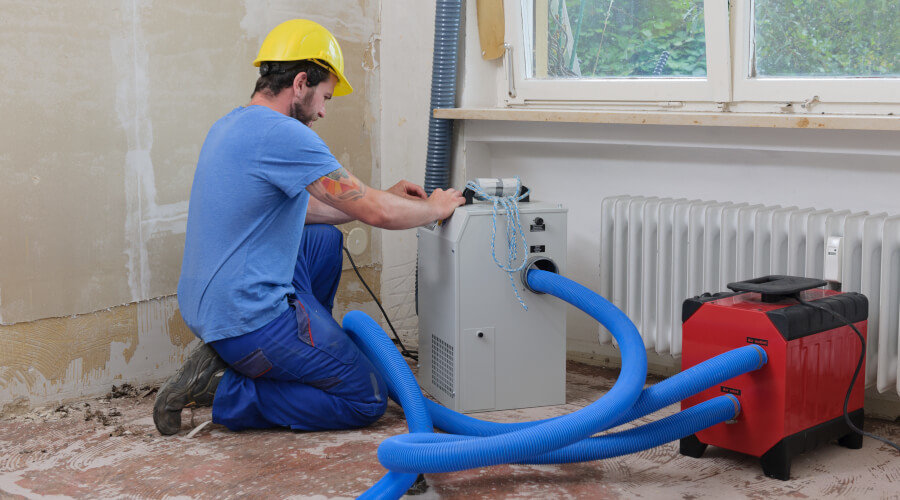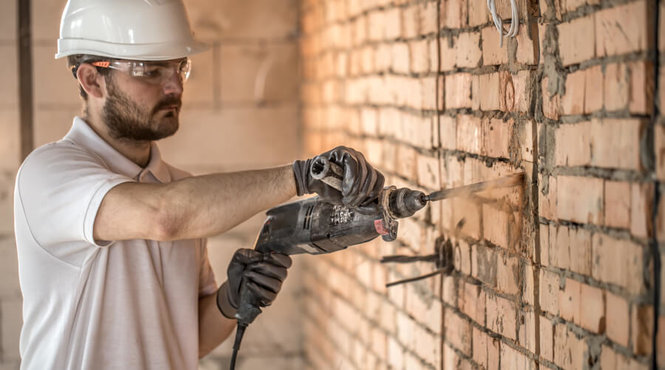What is a Dehumidifier & What do they Do?
Dehumidifiers are appliances that remove moisture from the air of a room or space, allowing for the water content on surfaces and in object to evaporate quicker. They way they collect water and recirculate drier air, means they can reduce humidity problems and speed up drying. They can prevent condensation and damp and improve the quality of air and ease allergy symptoms. They help to preserve sensitive materials and protect equipment. They can dry out clothes, dry areas after leaks or floods, dry construction work like wet trades and decorating. They can also dry materials during industrial processes, manufacturing, and food & drink production.
All in all, dehumidifiers do one job, but it's such a helpful process, it makes them really versatile and helpful for a massive range of jobs and sectors. You can use them in homes, offices, workshops, warehouses, construction sites, emergency sites, and more, which makes them a vital part of any hire fleet.
How do Dehumidifiers Work?
There are 2 main types of dehumidifier - refrigerant and desiccant. They both separate moisture from the air in very different ways:
- Refrigerant: Also called compressor or condensation dehumidifiers, they use a compressor that pumps refrigerant gas through a set of metal coils so that they are are the coldest surface in the space. A fan draws ambient air into the unit and passes it over the coils. The coils cool the moisture in the air to below its dew point, causing it to condense into a liquid. This moisture then drips away and is collected in a water collection tank or drained out from an outlet. The cold, dry air then passes through a warm condenser, which heats it, then a fan recirculates it back out into the space. The process continues over and over, lowering the relative humidity within the space.
- Desiccant Dehumidifiers. Also known as absorption dehumidifiers, they use desiccant material on a rotary wheel. A fan draws air into the dehumidifier and passes it through the desiccant, which absorbs moisture from the air like a sponge and the dry air is recirculated into the space. The saturated desiccant wheel continues to rotate, and a stream of reactivation air and a heating element dry it out. The collected moisture evaporates and is removed from the unit as water vapour, allowing the desiccant to absorb more moisture.
What are the Benefits of a Dehumidifier?
Humidity levels can change based on the time of year, weather, local ventilation, and some other changing factors. Keeping the relative humidity level between 30% and 50% is what experts consider the most suitable level for health and comfort, and 45% on the nose is the most ideal.
Using a dehumidifier to lower the relative humidity in an area has lots of benefits. Controlling humidity can prevent condensation, damp, mould growth, and other building blemishes that are signs of moisture damage. Moisture damage in any building can lead to uncomfortable surroundings, bad odours, and actual structural damage. Damage to paints and varnishes, deterioration of adhesives, swelling and warping of building materials like wood, damage to brick and concrete, corrosion of metal building materials including wiring, can all be devastating to a home or a place of business.
Lowering the relative humidity in areas that contain sensitive materials like server rooms, galleries, libraries, museums, and other storage facilities, can be vitally important. The preservation of artwork, documents, and equipment can help to protect valuable and significant items, and prevent disruption to online services.
Dehumidifying air can have health benefits, as high humidity can trigger allergic reactions. Humid areas are playgrounds for dust mites, mould spores, pollen, pet dander, pests, and other allergens. Preventing the growth and circulation of pollutants can alleviate symptoms, such as sneezing, coughing, sore eyes, itchy skin, and more.
Dehumidifiers can help to dry out damp areas quickly and effectively. Whether a room has suffered from a leak or flood, or you are drying construction work like screed, plaster, paint, concrete, wallboard, a dehumidifier can elevate the drying process. You can use one on its own or with a heater and fan, allowing you to quickly remediate and dry spaces, stay on schedule, and prevent cracking or distortion.
You can use dehumidifiers to tackle:
- High relative humidity
- Mould
- Damp
- Condensation
- Flood and leak water
- Corrosion
- Allergies
- COPD and Asthma symptoms
- Bugs and dust mites
- Wet trades
Do I Need a Dehumidifier?
You only need a dehumidifier if you have a problem to solve. Particularly in homes, the signs you have excessive moisture that's getting trapped inside can be really obvious. If you have recently had a leak or flood, you might need to dry the space out and prevent long term damage.
Some warning signs include:
- Work takes too long to dry
- Damp or water marks walls or ceilings
- Stuffy atmosphere
- Condensation on windows
- Musty or stale smell
- Mildew or mould
- Poor ventilation
- Rotting wood
- Excessive allergies
- Corrosion of pipes on equipment






